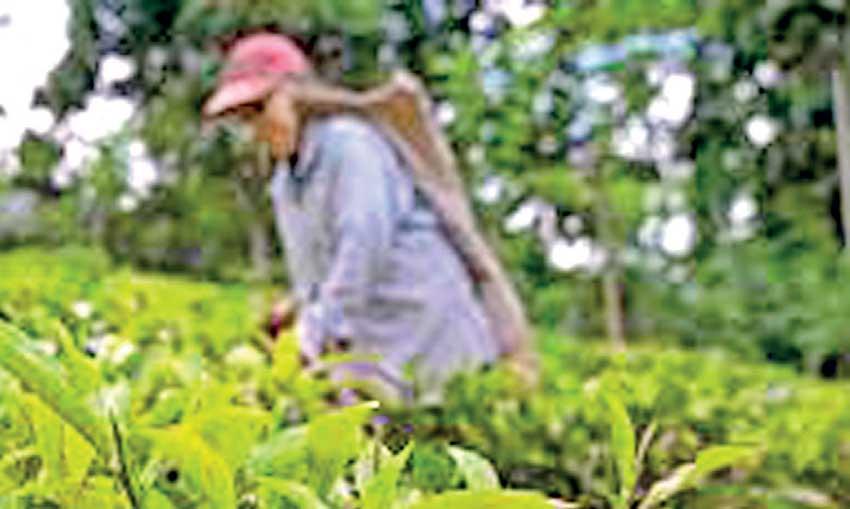18 Oct 2021 - {{hitsCtrl.values.hits}}

 One consignment of potassium chloride fertiliser arrived on September 14, presumably to be applied for the paddy sector. The potassium chloride is not an organic material. However, the input materials approved for organic farming need not only be organic.
One consignment of potassium chloride fertiliser arrived on September 14, presumably to be applied for the paddy sector. The potassium chloride is not an organic material. However, the input materials approved for organic farming need not only be organic.
Potassium chloride is a mineral and not organic but it’s permissible to be used for organic farming under international and SLS standards. Even some chemicals such as copper-based chemical mixtures are allowed to be used for organic farming under international standards.
Tea sub sector
As for the tea sector, what we have been saying is the government policy change as per the Cabinet decision on April 27 will enable us to arrest the tea land degradation and improve soil quality and thus moving towards green agriculture - plantation economy. As stated in the Cabinet paper, the state policy change is ‘migrating into green socio- economic pattern - this can be termed ‘regenerative agriculture’ or the green economic system.
One of the milestones in the tea strategy -2030 road map is improving soil quality and air and water quality through an integrated soil fertility management and balanced nutrient management.
Nevertheless, the Sri Lanka Tea Board (SLTB) officials are closely watching and monitoring the entire tea supply chain - five months have lapsed from the government policy change prohibiting fertiliser imports and up to end September, a detailed scientific analysis on statistics of production, auction sales data and physical inspection of factories/estates has not revealed any major drop in quantity. However, there will be issues if no nutrients are provided at the earliest.

Addressing tea growers’ concerns
In fact, the tea production to date is higher than the average of corresponding period during the last five years. This shows that good weather conditions, especially water and sunlight are equally important along with providing the required nutrients. Therefore, it is important to address adverse effects of ‘climate change’ through mitigating and adaptation strategies.
The confusion here is majority of people have misunderstood the word ‘organic’ in the government proposal, thinking the stakeholders are required to immediately convert tea production and exports into organic. We need to educate the farmers and there should not be loss of income for efficient growers, even during the transitional period. At the same time, malpractices and under utilisation of land and over use of inputs without following GAPs need to be arrested by the authorities. The name of the game is ‘green agricultural system’, as stated in the said Cabinet paper and the President’s address at the General Assembly, United Nations recently - green energy, green agriculture - this is how I understood the vision.
The positive feature is the emergence of R&D initiatives mooted by the tea sector hitherto not happened and the admission that there has been an excessive usage of chemical fertiliser and decline in yields. There has been hardly any soil analysis undertaken during the last couple of years and lack of site-specific fertiliser application. Scientists have concluded that beneficial microbes in the soil are disturbed with excessive application of chemicals. In order to address farmers’ concerns and genuine grievances, there is nothing wrong in using nano-hybrid chemically bonded, ‘slow release’ fertiliser until we are self-sufficient in the production and supply of ‘organic’ fertiliser. Based on the approvals received from the government, the private sector importers have already been allocated ordering sufficient quantities of ammonium sulphate last week (under import control licence scheme-07/05/21) to be mixed with minerals such as ERP and potassium for tea estates.
The production and supply of organic fertiliser is also increasing. However, if they don’t provide with sufficient N and K, there will be issues both in quantity and quality. Another issue for exporters is lack of shipping space and shortage in containers more than other Issues - that’s being sorted out.
Conclusion
My understanding is the vision of the head of the state is: how do we reposition and market ‘Sri Lanka’ globally as a unique country? As for Ceylon Tea marketing strategy - how do we position ‘Ceylon Tea’ in the minds of discerning tea consumers globally as a unique product? The state policy change should be viewed in that perspective. Our ‘Ceylon Tea’ brand story; the cleanest tea in the world is being reinforced with this state policy change: ‘green socio-economic pattern’. This is on par with the tea strategy road map 2030 prepared by CTTA, the private sector apex body for the tea industry, in consultation with the Tea Board, ministry and other stakeholders.
Let us work together to realise the true potential to obtain higher net foreign exchange, so that the benefits will trickle down to the farmers in accordance with Tea Control Act No 51 of 1957. The way forward strategy should be communicated to everyone.
(Jayampathy Molligoda is Chairman of the SLTB)
23 Dec 2024 3 hours ago
23 Dec 2024 4 hours ago
23 Dec 2024 4 hours ago
23 Dec 2024 4 hours ago
23 Dec 2024 6 hours ago